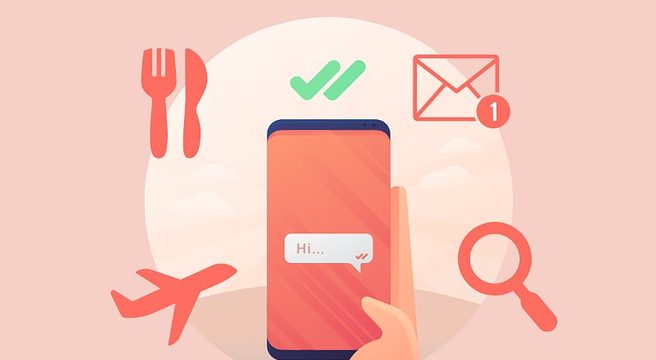Psychology plays an absolutely crucial part in all kinds of marketing. Whether it’s choosing which shelf and aisle to best place products in a supermarket, selecting the right words for a billboard campaign, or simply picking the right colour for your “buy now” button; the way businesses sell to people is inextricably linked with how our minds work.
As a subset of online marketing, content marketing is no exception to this rule. Though our modern lives continue to get further and further away from our predecessors, a lot of historic hangups remain lodged in our psyche.
So let’s dive in!
Music to the Ad-Sceptic’s Ears!
The pervasiveness of modern internet access is great, but it also means we’re marketed to more than ever. Many of us have understandably become cynical towards pushy advertising efforts both online and offline. Just as we’ve formed the habit of muting the ad breaks on TV, we similarly tune out paid-for search results online and click “skip ad” on YouTube ads as quickly as possible.
Content marketing bypasses the hard sell by providing insightful and informative answers that the reader is likely to be seeking out. Content’s visibility comes from your prospects’ natural curiosity and the pursuit of information, rather than pushy banners and mid-roll videos. And when you consider the shareability of blogs, videos, infographics and so on over social, the spread of helpful information can achieve a more meaningful, organic reach.
Good Impressions are Contagious!
Creating positive and meaningful content will cause your readers to view you more positively, and according to Edward Thorndike’s “Halo Effect”, this positivity will naturally feed into an overall good impression of you as a whole. As an example, say you offer website development and graphic design services and you write a well-received post about the ins and outs of graphic design. The halo effect means your visitors will likely judge your web development services just as positively too.
The Famous FOMO
Ah, FOMO, the Fear Of Missing Out. We’re naturally quite loss averse creatures and on the whole, we are far more likely to snap up products or services that we perceive as scarce. How many times have you clicked “add to cart” more readily than usual after seeing that there’s “only 1 left in stock?” This is FOMO in action.
If you consistently create content about brand new, emerging industry topics and provide advantageous yet unique advice on the regular, visitors won’t want to miss your next unique instalment – potentially bagging you an avid fanbase.
You Scratch My Back…
Reciprocity is an important concept in marketing psychology and in content marketing it’s absolutely essential. Reciprocity is simple: say a PC repair shop offers you a bit of free advice about a small problem – you’re then more likely to go back to them when you’ve got a bigger issue. It’s literally “you scratch my back, I’ll scratch yours”.
Content marketing is exactly the same concept, but online. By giving away plenty of reliable and insightful advice for free through blog posts, social media, and free downloads, your followers are more likely to reciprocate by following, sharing, making a purchase, or recommending you to others.
Attention Grabbing Opportunities!
The title tags and headlines that sit within your static website content tend to be informative and straightforward, but they can sometimes be a little dry. Creating regular blogs or videos and hosting them on your site allows you to showcase creative, attention-grabbing headlines that encourage clicks and generally set you apart.
If you’ve looked into marketing psychology before, you’ve probably heard of the “information gap theory.” This theory put forward by George Loewenstein of Carnegie-Mellon University posits that our curiosity meter goes into overdrive when we’re made aware of a missing link between the info we want and the info we already know. So try to position your content as promising an achievable, yet significant boost to your average reader’s current knowledge. This best works when used in a headline or near the start of a piece of content, to entice people to click or to read on. Jeff Monday explains this theory and its marketing applications awesomely in this video:
Variety is the Spice of Life
If you have a band of loyal followers, you may want to keep them on their toes – in a good way! When you create the same kind of content all the time, some visitors may get bored with the same-old-same-old and jump ship. Research from University College London investigated how our minds process novel, new options and suggests that our brain rewards us when we experience something a bit different from what we were expecting.
Consider how you can give your readers something they don’t expect, even in small ways. If you’re stuck in a rut of blog writing, sidestep expectations with an infographic or a video. Mix it up wherever you can – chances are that the novelty of a new format will stick with your long-term followers and may nudge them closer to buying. If you can’t produce content in a different format than you already do, you could discuss a problem slightly differently or offer unorthodox solutions that may oppose expectations.
Further Reading
Want to read more about marketing psychology? Check out this article from the archives about psychology in copywriting: The Psychology of Copywriting: Appealing to the Lizard in All of Us.
Looking to create content on a budget? Check out my recent post: 5 FREE Tools to Kickstart Your Content Marketing Journey.
[bctt tweet=”Wondering how #psychology and #contentmarketing overlap? Improve your content today with science!” username=”yellbusiness”]
What parts of marketing psychology interest you? What sorts of content do you create? How could you change your content up to keep the novelty factor high? Let’s compare notes down in the comments!





